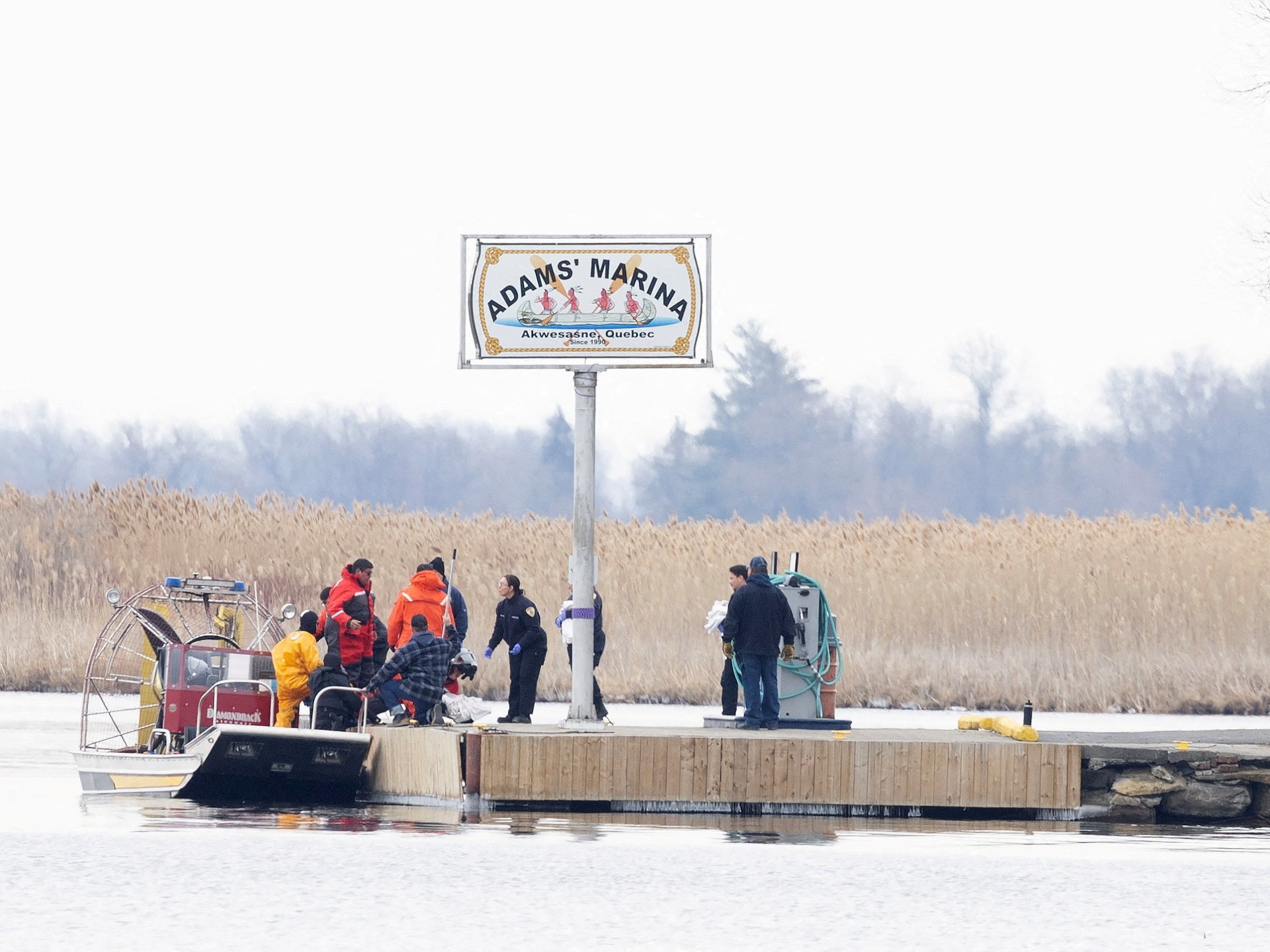Over 170 ‘plausible burials’ detected in search for unmarked graves at former Kenora residential school site
Warning: This story contains distressing details.
Wauzhushk Onigum Nation says ground-penetrating radar (GPR) has detected more than 170 anomalies during a search for unmarked graves at the site of a former residential school in Kenora, Ont.
The anomalies, referred to as “plausible burials,” were found in cemetery grounds associated with the former St. Mary’s Indian Residential School, Wauzhushk Onigum Nation said in a media release Tuesday.
The search began in May.
“With the exception of five grave markers, the remaining are unmarked by any grave or burial markers,” the release said. “The site has been secured consistent with the Nation’s Anishinaabe protocols.”
Wauzhushk Onigum Chief Chris Skead told CBC News the searches of the site are “survivor driven.”
“Here in Wauzhushk Onigum, we have a little over 50 survivors that would have attended in the ’40s, ’50s, ’60s, and basically when it closed,” he said Tuesday. “They were difficult discussions, obviously, because you’re going back in time [to] when they were children, which obviously wasn’t a safe time to be Anishinaabe, just with the policy from the Crown government.”
There’s a lot of work that has been done to date, and still a lot of work forthcoming, not only utilizing that technology, but also the mental health supports that we’re going to require as a nation, as Anishinaabe people.– Chief Chris Skead, Wauzhushk Onigum Nation
Skead said those discussions with survivors led to the identification of areas that were searched.
Wauzhushk Onigum said it plans to investigate the anomalies further and conduct searches at additional sites “that have been identified through survivor testimony, archeological assessment and archival investigations that show burial rituals being conducted by former residential school staff,” the release said.
St. Mary’s Indian Residential School was operated by the Roman Catholic Church from 1897 to 1972. The National Centre for Truth and Reconciliation (NCTR) says at least 36 students died while attending the school.
Wayne Mason, whose father attended St. Mary’s, said the negative effects of the schools are “intergenerational.”
“My dad came back hurt and abused,” Mason said. “We’re still struggling, and our family has had to live through that.”

“We continue to try to help people …,” he said. “There’s a lot of people that have been talking about it for a long time now, but there’s some people that are just starting to talk about it.”
“There’s a lot more coming out, and there’s going to be people that finally put some closure to what happened to their their loved ones. But there’s going to be a lot of work to be done to heal from all that.”
Mason, executive director of Winnipeg’s Wa-Say Healing Centre, which provides health and wellness support to residential school survivors and their families, said he expects more discoveries like the one at the former St. Mary’s site.
“When we think about the Holocaust, and the perpetrators were being charged, and they’re still going to court even after they were old … some of these people that are still alive today that were perpetrators of the residential school killings should be charged,” he said. “There should be an investigation, inquiry or whatever you want, but they should be charged.”
First Nation meets with government officials
On Tuesday, Wauzhushk Onigum representatives were to meet with federal Crown-Indigenous Relations Minister Marc Miller, Ontario Minster of Indigenous Affairs Greg Rickford, federal Minister of Indigenous Services Patty Hajdu and Kimberly Murray, special interlocutor for missing children and unmarked graves and burial sites associated with residential schools.
The meeting is to discuss the next steps and resources to cover the upcoming investigations.
“I know the catch phrase out there is reconciliation,” Skead said. “In order to get to reconciliation, we need the truth. And we need sustained funding to get to that truth.
“There’s a lot of work that has been done to date, and still a lot of work forthcoming, not only utilizing that technology, but also the mental health supports that we’re going to require as a nation, as Anishinaabe people,” he said. “We need that funding, we need that accountability and we need those commitments from Canada, and the province.
“I’m using this opportunity to assert that they will do what they said they’re going to do,” Skead said. “And that, to me, is true reconciliation.”
Canada operated over 150 residential schools for over 140 years, with the last one, in Saskatchewan, closing in the 1990s.
An estimated 150,000 Indigenous children were taken from their homes and forced to go to the schools and assimilate into settler culture.
In May 2021, the T’kemlups te Secwepemc First Nation announced it had identified an estimated 200 potential burial sites at the former Kamloops Indian Residential School. Since then, hundreds more potential sites have been identified across Canada.
Jennifer Wood, NCTR’s commemoration and community and engagement liaison officer, said it’s “critically important” to continue searching the sites of former residential schools.
“These are children that are being discovered,” said Wood, an Ojibway residential school survivor from Neyaashiinigmiing First Nation. “They’re unmarked graves.
“This shouldn’t be happening to our people, but it is. And it’s in our face and we have to deal with it. So we have to face it. We have to address it. We have to talk about it.”
WATCH | Jennifer Wood speaks about the impact that residential schools have had on survivors:
Jennifer Wood, an Ojibway residential school survivor from Neyaashiinigmiing First Nation who works with the National Centre for Truth and Reconciliation, discusses the impact on survivors following the detection of ‘plausible burials’ at a former residential school site in Ontario, and speaks about the work that still needs to happen.
Wood said she hopes Indigenous communities can “join together with governments, with private sectors, corporate sectors, institutions, foundations that will come out and help us, because we need a lot of help in training, capacity in our communities, human resources. There’s all kinds of things that are going to come with the discoveries of these children.”
Support is available for anyone affected by their experience at residential schools or by the latest reports.
A national Indian Residential School Crisis Line has been set up to provide support for former students and those affected. People can access emotional and crisis referral services by calling the 24-hour national crisis line: 1-866-925-4419.
Mental health counselling and crisis support is also available 24 hours a day, seven days a week through the Hope for Wellness hotline at 1-855-242-3310 or online at www.hopeforwellness.ca.


.jpg?crop=1.777xh:h;*,*&downsize=510px:*510w)



